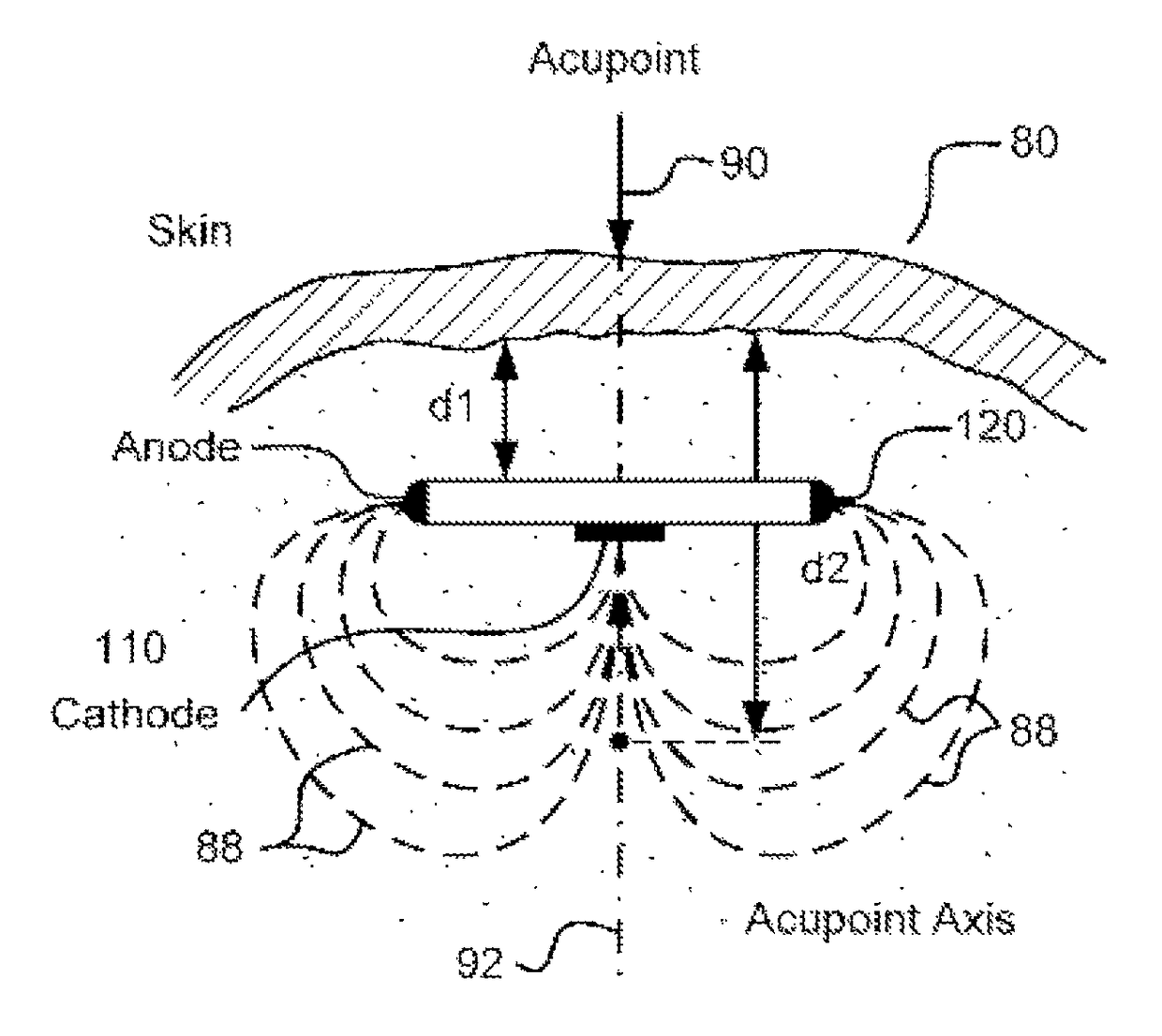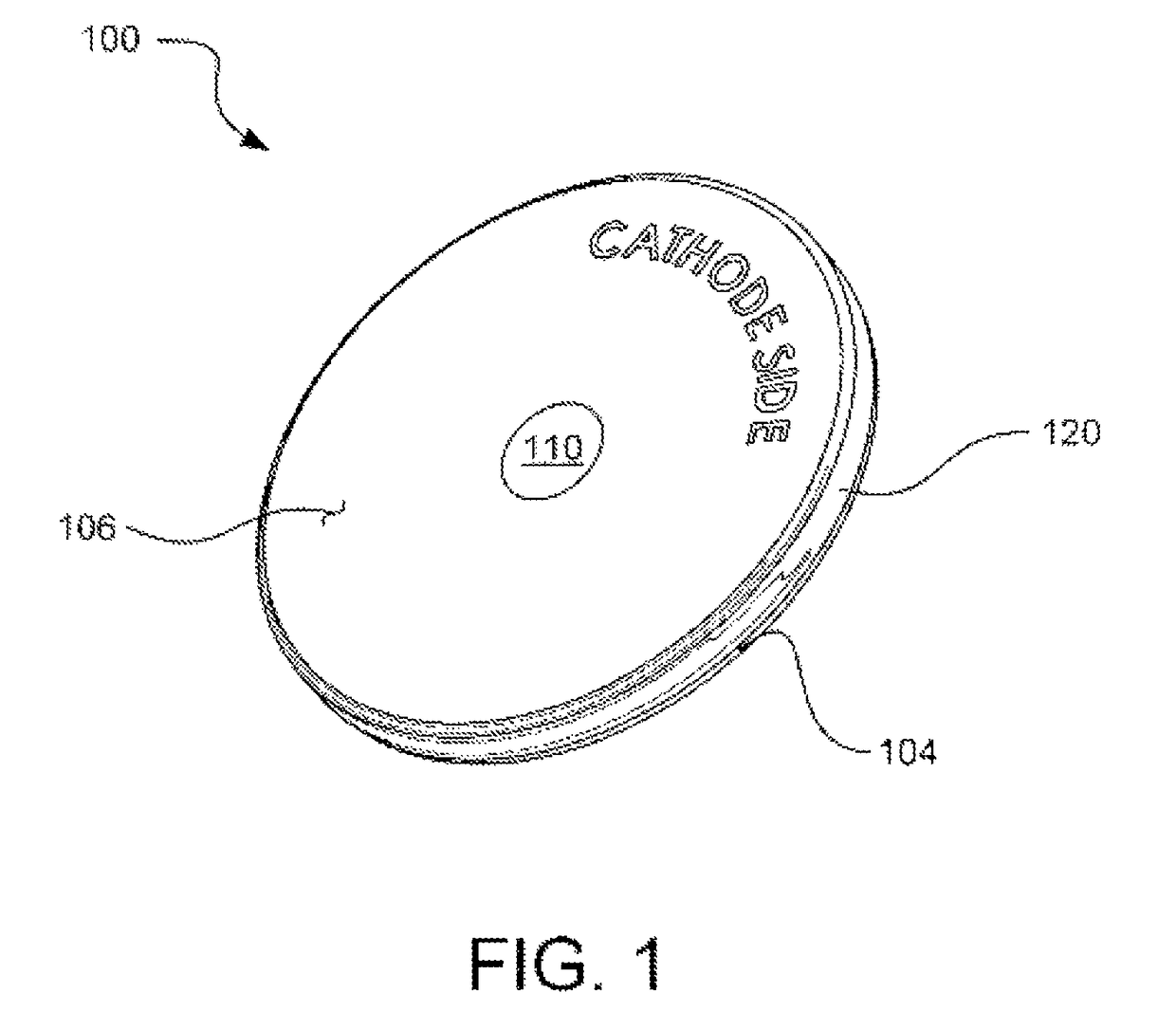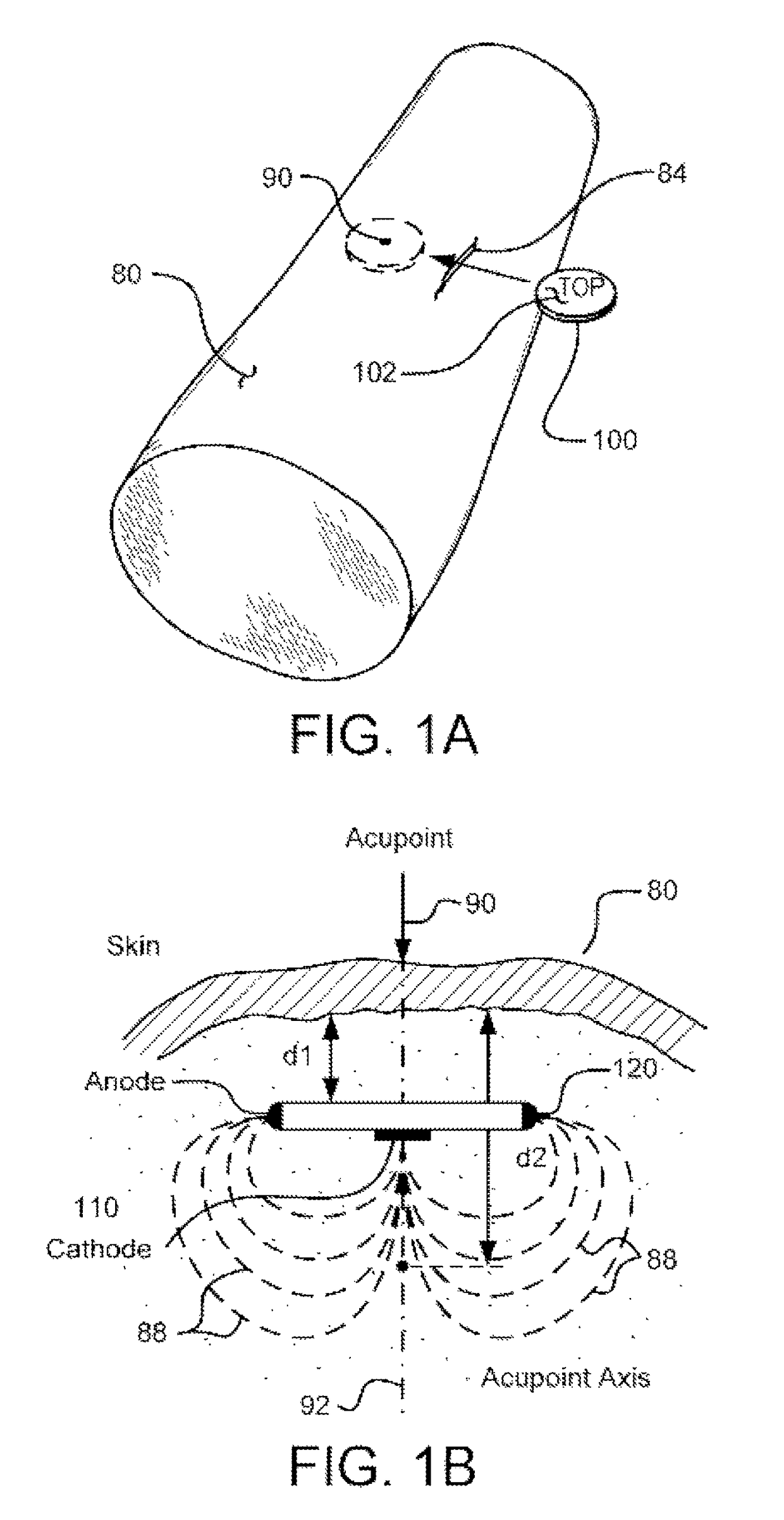Circuits and methods for using a high impedance, thin, coin-cell type battery in an implantable electroacupuncture device
a high-impedance, coin-cell-type battery technology, applied in the field of circuits and methods for using a high-impedance coin-cell-type battery in an implantable electroacupuncture device, can solve the problems of limited power output capacity of such batteries, relatively high output impedance, and inability to power any type of electronic circuit, so as to prevent the battery voltage, increase the battery voltage, and ensure the effect of operation
- Summary
- Abstract
- Description
- Claims
- Application Information
AI Technical Summary
Benefits of technology
Problems solved by technology
Method used
Image
Examples
Embodiment Construction
Overview
[0067]Disclosed and claimed herein is an implantable, self-contained, electroacupuncture (EA) device that is powered by a small, thin, coin-cell type battery having an internal impedance of at least five ohms. While the device described is intended for, and is described for use as, an EA device, it should be noted that it may be used for other similar tissue stimulation applications. Moreover, while the preferred EA device is leadless, for some applications a short lead may be needed to correctly position the electrodes precisely at a desired stimulation site. In an exemplary embodiment, the EA device includes two electrode contacts mounted on or connected to the surface of its housing. The EA device is adapted to treat a particular disease or health condition of a patient. In one embodiment, the electrodes of the EA device are mounted on the surfaces of its housing and include a central cathode electrode on one side of the housing, and an annular anode electrode that surrou...
PUM
 Login to View More
Login to View More Abstract
Description
Claims
Application Information
 Login to View More
Login to View More - R&D
- Intellectual Property
- Life Sciences
- Materials
- Tech Scout
- Unparalleled Data Quality
- Higher Quality Content
- 60% Fewer Hallucinations
Browse by: Latest US Patents, China's latest patents, Technical Efficacy Thesaurus, Application Domain, Technology Topic, Popular Technical Reports.
© 2025 PatSnap. All rights reserved.Legal|Privacy policy|Modern Slavery Act Transparency Statement|Sitemap|About US| Contact US: help@patsnap.com



